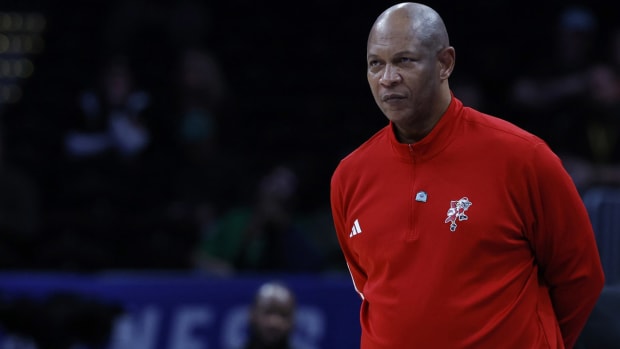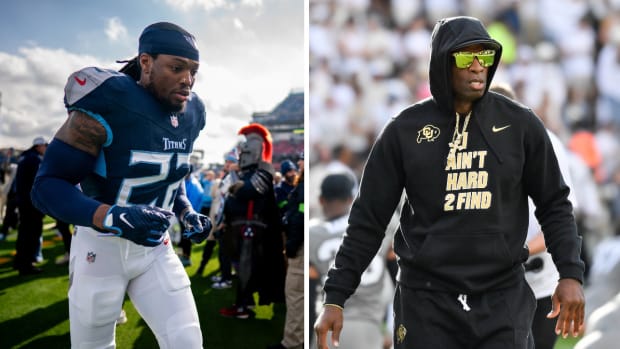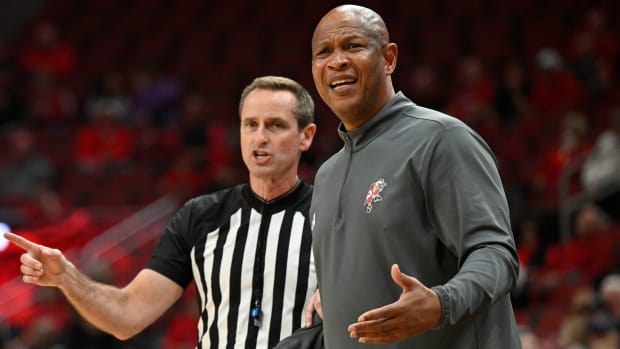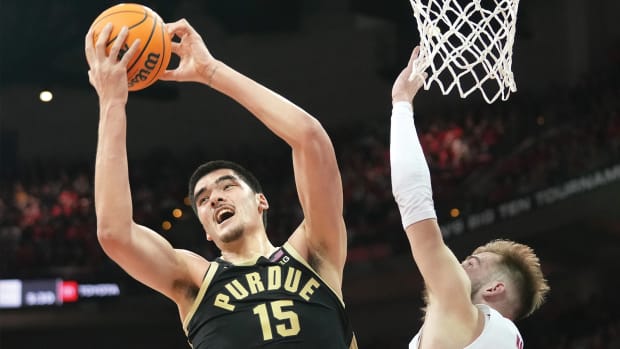Sources: NCAA on Brink of Allowing One-Time Immediate Transfer for All Athletes
INDIANAPOLIS — For a second time in about three months, the NCAA is on the brink of granting all college athletes the ability to immediately transfer schools without penalty.
The Division I Council, the organization's primary legislative body made up mostly of school athletic administrators, met virtually Thursday to iron out details of the landmark legislation, which reverses a policy from the 1960s. The group is expected to meet April 15 to approve the measure, sources told Sports Illustrated. The new transfer legislation would go into effect immediately after it is approved by the NCAA Board of Governors, a meeting that could come soon after the D-I Council’s decision.
Under current transfer rules, athletes in five sports, including football and men's and women's basketball, are ineligible in the first year they transfer unless they receive a waiver. The new rule would allow all athletes to move freely at least once, though it includes some stipulations. Athletes must submit notification of transfer by certain dates to be eligible at their next location. Fall and winter sport athletes would have to notify their schools by May 1, with an exception extending the date to July 1 for a end-of-the-year head coaching change or the non-renewal of scholarships. Spring sport athletes would have until July 1.
However, Thursday’s discussion among D-I Council members centered around making the notification dates flexible this year, sources told SI. Because of the timing of the decision and COVID-19, the fall and winter sports’ notification date may be pushed deeper into the summer.
During his annual news conference before the Final Four, NCAA president Mark Emmert expressed strong support in passing the one-time transfer exception, as he did in January. The NCAA was poised to pass the transfer legislation then, until a letter from the Department of Justice raised antitrust concerns and delayed the vote.
NCAA officials have since met once with those at the Department of Justice, Emmert says, and he suggested more meetings are planned.
“My hope is we can get to a place where we understand their concerns and we can move forward shortly,” Emmert said.
Later during the news conference, Emmert cited the D-I Council’s evolving work on the one-time transfer exception, even saying he “anticipates” it will be passed.
“Students ought to have that ability to transfer once during their career and I understand the complexity that creates for coaches and roster management, but I think it is overdue we provide that flexibility,” Emmert says.
What he did not mention is that the driving force behind the latest progressive rule changes from the NCAA is, likely, Congress. The NCAA is desperately lobbying Congress to create a federal bill to govern name, image and likeness (NIL) and preempt a bevy of state laws that are being hurriedly passed. Because of this, the organization finds itself at the mercy of Congressional members who, on both sides of the aisle, are publicly skewering the association’s amateurism model and pushing for progressive changes, such as the transfer policy.
“What I’ve heard about the conversation with Mark Emmert is a clear sign of lack of leadership,” Sen. Richard Blumenthall (D-Conn.) said earlier Thursday during a media call with a player-led group. “He says he wants Congress to help him—well, we’re going to give him hell.”
Last October, Sports Illustrated obtained a copy of the NCAA’s new one-time transfer legislation. In order to transfer and be eligible, athletes must also leave their previous school academically eligible, according to the proposal. An athlete’s previous school would not have any ability to object to the transfer. The legislation prohibits athletes from competing in the same academic season at two different schools.
The NCAA would not impose limits on the number of transfer athletes that a D-I program may accept in a given year, the legislation says. For now, the NCAA is not adjusting the initial counter limit that caps a football team from adding more than 25 players in a year. However, that is a topic likely to be examined in months to come.
Intra-conference transfers are another sticking point. Many leagues force players to sit a year when moving from one conference school to another. Conferences would have to adjust their own rules to mirror the NCAA’s new change. At least at one conference, the ACC, already lifted its intra-conference transfer rule earlier this year. The Pac-12 did so in 2019.
Relaxing transfer rules is nothing new. The NCAA has adopted a slew of player-friendly transfer-related changes over the last two years. For instance, schools no longer have authority over a player’s transfer destination, a change that coincided with the creation of the transfer portal in fall of 2018. Graduating players can now play immediately after transferring within their own conference, and most schools release signees from their letters of intent if a head coach leaves a school before their first semester.
The latest change could reverse a long-standing rule adopted NCAA-wide in the early 1960s, one that originated more than a century ago when a group of Ivy League schools agreed to a one-year sit-out provision for players transferring among them. Under the current policy, players can transfer freely and play immediately in all sports except for baseball, men's and women's basketball, football and men’s ice hockey.
While many administrators agree to wanting a unified transfer rule, they admit to varying degrees of concerns, most of them stemming from an anticipated spike in transfers. Without a one-year penalty, players will be more inclined to leave.




